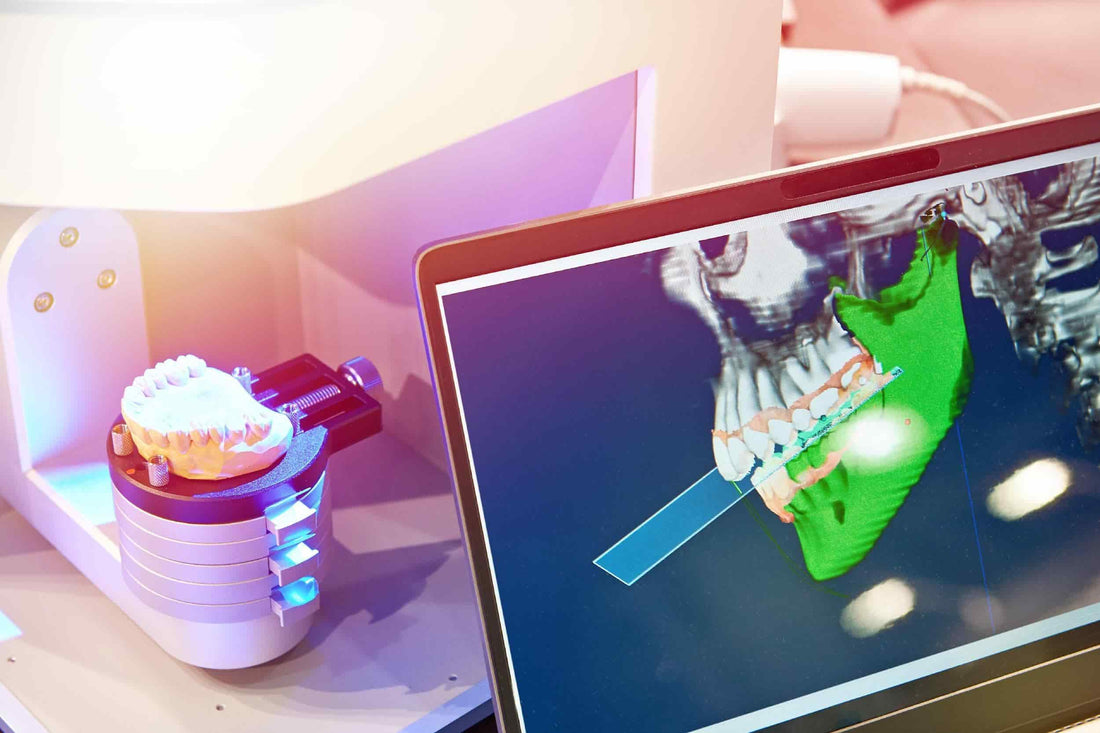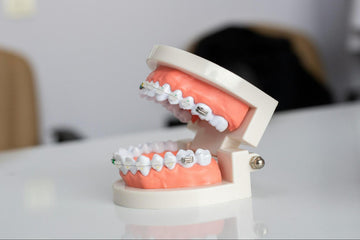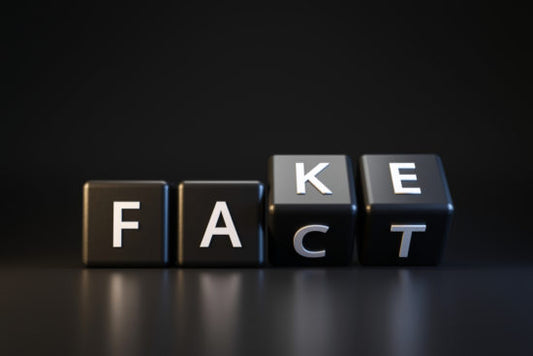3D Printing in Dentistry – Customised and Precise Solutions

3D printing, computer-aided manufacturing (CAM) and computer-aided design (CAD) software and machines are nothing new — both being around since the 70s and 80s. However, times have changed.
With recent advancements in printing capabilities — as well as the increased access to lower-cost biocompatible materials — 3D printing is more commonly used in the dental field than ever before.
If the concept of 3D printing is alien to you, read on as Dr Sanjay Patel from Enlighten shares everything you need to know about 3D printing in dentistry — covering what it is, how it’s beneficial and all the practical applications it can be used for.
What is 3D printing in dentistry?
3D printing in dentistry is the use of special machines to create custom dental tools, devices, and restorations by building them layer by layer from materials like resin and other bio-friendly materials.
It helps dentists make things like crowns, dentures, and clear aligners — as well as surgical guides to help fit them — quickly and with great accuracy, improving patient care and saving time.
How is 3D printing used in dentistry?
3D printing can be used to create:
1. Crowns, bridges, and veneers
3D printing allows dentists to create custom-fit crowns, bridges, and veneers with exceptional precision. Using a digital scan of the patient’s teeth, a detailed 3D model is designed. The printer then builds the restoration layer by layer using dental-grade materials such as resin or ceramic. This process eliminates the need for traditional moulds, reducing the turnaround time and ensuring a perfect fit for the patient. In some cases, patients can receive their restorations on the same day.
2. Orthodontic devices
Orthodontists use 3D printing to manufacture clear aligners, retainers, and other orthodontic devices. A digital scan of the patient's teeth serves as the blueprint for these devices. For example, clear aligners like Invisalign are made by 3D printing models of the teeth at each stage of alignment. This technology ensures precise adjustments and enables orthodontists to create customised treatment plans efficiently.
3. Surgical guides
3D printing is invaluable for creating surgical guides that help dentists place implants with pinpoint accuracy. These guides are designed based on a patient’s CT scan and show the exact location, angle, and depth for drilling and implant placement. This level of precision reduces the risk of complications, shortens surgery times, and improves patient outcomes.
4. Dentures
Traditional denture fabrication involves multiple appointments and manual adjustments, but 3D printing streamlines this process. Dentists can design and print full or partial dentures based on digital impressions, ensuring a comfortable and precise fit. This method also allows for easy replication or modification if the dentures are lost or need adjustments.
5. Models for planning and diagnostics
3D-printed models of a patient’s teeth or jaw are used to plan treatments and surgeries. These physical models are particularly helpful for complex procedures like jaw reconstruction, orthodontic treatments, or implant placements. They also help dentists communicate treatment plans more effectively to patients and other dental professionals.
6. Custom trays
Impression trays are used to take moulds of a patient’s teeth. With 3D printing, these trays can be tailored to fit the unique shape and size of a patient’s mouth, resulting in more accurate impressions. This customisation improves the quality of dental restorations and reduces the need for repeat impressions.
Advantages of 3D printing in dentistry
3D printing in dentistry boasts many advantages including:
· Precision and accuracy — 3D printing enables the creation of highly detailed and accurate dental restorations and tools, ensuring a better fit and improved patient outcomes.
· Customisation — Each product, such as crowns, aligners, or dentures, can be tailored specifically to the patient’s unique dental anatomy, providing superior comfort and functionality.
· Speed and efficiency — 3D printing significantly reduces production time. In some cases, dental restorations can be made and fitted in a single visit, eliminating the need for multiple appointments.
· Cost-effectiveness — By reducing material waste and manual labour, 3D printing lowers production costs for dental labs and clinics, potentially making treatments more affordable for patients.
· Improved treatment planning — Dentists can use 3D-printed models to visualise and plan complex procedures more effectively, leading to more predictable results.
· Consistency — Unlike traditional methods, 3D printing offers consistent results with minimal variations, even when producing multiple identical items like aligners.
· Versatility — 3D printing can produce a wide range of dental products, including crowns, surgical guides, aligners, and prosthetics, all from the same technology.
Disadvantages of 3D printing in dentistry
Although 3D printing has many advantages when it comes to patient care, there are some things that they need to consider, as well as healthcare professionals and institutions.
Some challenges to consider with dental 3D printing are:
· High initial costs — Setting up a 3D printing system involves significant investment in printers, materials, and software, which might be a barrier for smaller clinics.
· Learning curve — Dental professionals need training to use the technology effectively, and errors during design or printing can compromise results.
· Material limitations — Not all materials are suitable for 3D printing, and some 3D-printed items may not have the same durability as traditionally manufactured products.
· Time-consuming for complex items — While 3D printing is faster overall, intricate designs or larger items may still take several hours to print.
· Post-processing requirements — Many 3D-printed items require additional steps, such as curing, polishing, or assembling, which adds to the overall production time and effort.
· Reliability and maintenance — 3D printers require regular maintenance, and technical issues can delay production. A single malfunction can disrupt the workflow.
· Regulatory and quality challenges — Dental products must meet strict health and safety standards, and ensuring consistent quality control for 3D-printed items can be challenging.
Want to know more about oral health?
Browse our expert guides, packed with helpful tips, advice, and the latest innovations to help you achieve and sustain a confident, dazzling smile!
FAQs
1. What is 4D printing in dentistry?
4D printing in dentistry refers to an advanced technology where 3D-printed dental materials are designed to change their shape, structure, or properties over time in response to environmental factors like heat, moisture, or pressure.
This innovation uses smart materials that can adapt to the dynamic conditions of the oral cavity.
For example, 4D-printed aligners or implants could adjust automatically to provide a more customised fit, enhancing patient comfort and treatment effectiveness.
Although not widespread, emerging technology represents a significant step forward in personalised and adaptive dental care.
2. What is digital dentistry?
Digital dentistry encompasses the use of advanced digital technologies to assist in dental fittings, workflows and planning.
This includes tools like digital scanners for creating 3D images of teeth, CAD/CAM (computer-aided design and manufacturing) systems for designing restorations, and digital X-rays for precise diagnoses.
These technologies improve accuracy, reduce treatment times, and often provide a more comfortable experience for patients. Digital dentistry also allows seamless communication between dental professionals, labs, and patients, creating a streamlined and modern approach to oral healthcare.
3. What is the future of 3D printing in dentistry?
AI is playing an increasingly important role in the world of dental 3D printing by improving accuracy, efficiency, and patient outcomes.
AI algorithms can be used to analyse digital scans of a patient's mouth, creating highly precise 3D models for custom dental restorations such as crowns, bridges, and dentures.
In the future, AI may also aid in predictive analytics, identifying potential dental issues before they arise and personalising treatments even further by tailoring designs based on a patient’s unique dental anatomy and needs.






